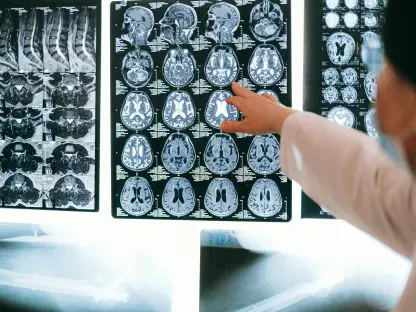Introduction
In the dynamic and ever-changing landscape of the contemporary workplace, the emphasis on investing in employee learning and development has become paramount for organizations striving for sustained success.
The recognition of this critical importance stems from the understanding that the prosperity of any business is intricately interwoven with the continual growth and adaptability of its workforce. As industries undergo rapid transformations driven by technological advancements, globalization, and evolving market demands, the need for a skilled and agile workforce has never been more pronounced.
This article delves into a comprehensive exploration of the myriad strategies and approaches available to organizations seeking to enhance their commitment to employee learning and development. Embracing these strategies not only serves to bridge existing skill gaps, but also establishes a foundation for fostering a culture of continuous growth and innovation within the organizational framework.
1. Assessing Learning Needs
The first step in enhancing employee learning and development is to conduct a thorough assessment of the company’s learning needs. This involves identifying skill gaps, both at an individual and organizational level. Surveys, interviews, and performance evaluations can provide valuable insights into the areas where employees require additional training. By understanding the most intricate and specific needs of your workforce, you can tailor learning programs that will address the lack of development opportunities.
2. Utilizing Technology for Learning
In the digital age, technology plays a pivotal role in transforming traditional learning methods. Learning Management Systems (LMS), virtual classrooms, and e-learning platforms offer scalable and cost-effective solutions for employee development. These tools enable workers to access training material—at their own pace—thus fostering a culture of self-directed learning. Additionally, technologies like virtual reality (VR) and augmented reality (AR) can provide immersive learning experiences, particularly in industries that require hands-on training.
3. Customized Training Programs
One size does not fit all when it comes to employee learning and development. Organizations should invest in customized training programs that cater to the unique needs and preferences of their workforce—or collaborate with platforms such as iSpring Learn or TalentLMS. Creating a varied development strategy should involve a mix of training, online courses, workshops, and on-the-job experiences. By providing a variety of training options, employees can choose the format that best suits their learning style, ensuring a more engaged and effective developmental journey.
4. Encouraging a Culture of Continuous Learning
Organizations that prioritize learning as a continuous process create a culture that values growth and development. This involves instilling a mindset where employees are encouraged to seek out new skills and knowledge regularly. Employers can promote continuous learning by providing dedicated time for professional development, offering incentives for completing training programs, and recognizing employees who actively pursue learning opportunities. Thus, when learning becomes an integral part of organizational culture, your talent is more likely to embrace and apply new knowledge in their roles.
5. Mentorship and Coaching Programs
Pairing experienced employees with those who are newer to the organization creates a valuable mentorship dynamic. Mentorship and coaching programs provide employees with personalized guidance and support, accelerating their learning curve. This not only facilitates the transfer of knowledge within the organization, but also fosters a sense of community and collaboration. By tapping into the wealth of experience within the workforce, you have the opportunity to build a strong and sustainable foundation for continuous learning and development.
6. Performance Feedback and Recognition
Effective learning and development should be tied to performance feedback and recognition. Regular performance evaluations provide an opportunity to assess how well employees are applying the knowledge gained through training programs. Constructive feedback empowers employees to understand their strengths and areas for improvement—guiding them in their learning journey. In contrast, recognition for achievements and milestones motivates them to actively participate in new learning initiatives, reinforcing the connection between development and success.
7. Promoting Cross-Functional Collaboration
Breaking down silos and promoting cross-functional collaboration is essential for holistic employee development. Encouraging employees to work on projects outside their immediate roles exposes them to diverse perspectives and skill sets. This not only broadens their understanding of the organization, but also creates a culture of adaptability and innovation. Cross-functional collaboration serves as a natural extension of employee learning and development, providing opportunities for on-the-job training and knowledge exchange.
8. Incorporating Soft Skills Training
While technical skills are absolutely essential, the importance of introducing and developing soft skills into your workforce cannot be overstated. Effective communication, problem-solving, teamwork, and adaptability are essential in today’s dynamic workplace. Employee learning and development programs should include modules that focus on enhancing these soft skills. This will not only contribute to individual growth—but also enable a significant improvement in overall team dynamics and organizational culture.
9. Investing in Leadership Development
Leadership skills are integral to the long-term success of any organization. Investing in leadership development programs ensures that employees at all levels are equipped with the skills necessary to lead effectively. These initiatives can include workshops, coaching sessions, and mentorship opportunities to nurture leadership qualities. A strong leadership pipeline not only benefits the organization’s succession planning, but also contributes to a positive and empowered work environment.
10. Measuring and Evaluating Learning Effectiveness
To ensure the success of employee learning and development initiatives, organizations must establish robust measurement and evaluation processes. Key performance indicators (KPIs) can be defined to assess the impact of training programs on employee performance, productivity, and overall job satisfaction. Feedback from participating, pre and post-training assessments, and follow-up evaluations can also contribute to refining and improving learning initiatives.
Conclusion
In conclusion, improving employee learning and development is not just a strategic choice, but a necessity for organizations seeking to thrive in today’s competitive landscape. By assessing learning needs, customizing training programs, leveraging technology, and fostering a culture of continuous learning, organizations can create an environment where employees are empowered to reach their full potential. Mentorship, feedback, cross-functional collaboration, and a focus on soft skills contribute to a well-rounded approach to employee development. As organizations invest in leadership development and establish robust measurement processes, they pave the way for sustained growth and innovation. Employee learning and development are not just investments in individuals—they are investments in the future success of the entire enterprise.









